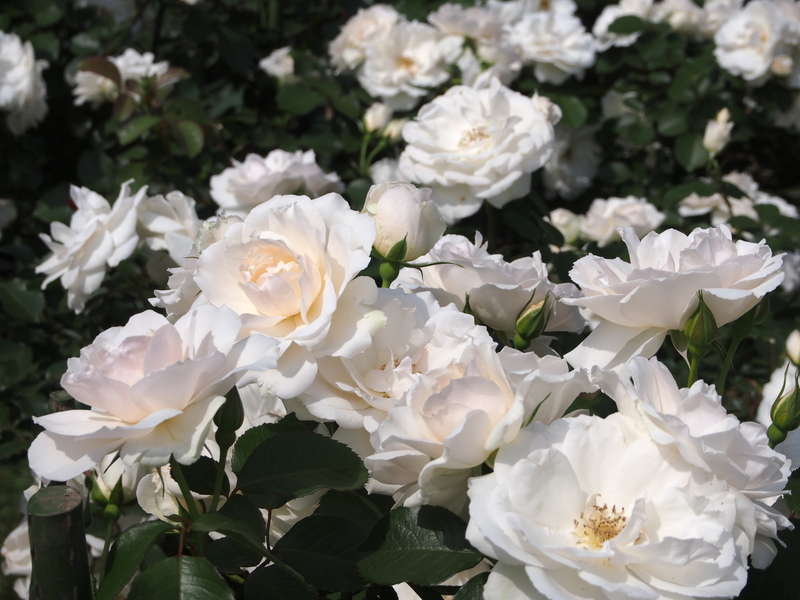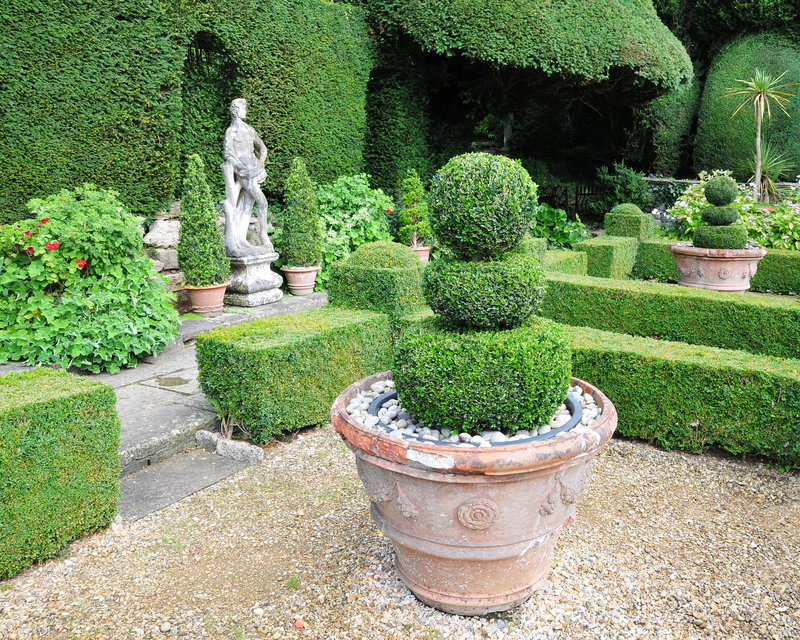From Chaos to Calm: Mapping Your Garden Revival
Posted on 14/09/2025
From Chaos to Calm: Mapping Your Garden Revival
Discovering a messy, overgrown, or uninspired outdoor space can feel overwhelming. However, transforming a chaotic garden into a calm sanctuary is not only achievable, but also incredibly rewarding. If your backyard has become wild or your flowerbeds neglected, this guide will show you exactly how to approach a garden revival, step by comprehensive step. Consider it your roadmap -- from chaos to calm -- for mapping a garden that soothes the senses and revives the soul.
Understanding the Chaos: Assessing Your Current Garden
- Survey the Area: Walk around your garden and take note of overgrowth, hidden treasures, or underused spaces.
- Identify Existing Features: Are there trees, shrubs, or structures worth preserving?
- Note Challenges: Recognize poor soil, drainage problems, or persistent weeds.
Your journey to a peaceful retreat begins with a thorough analysis of your existing garden. Use a notebook or your phone to jot down what you observe. Label troubled areas and highlight any hidden gems -- perhaps an old bench, a forgotten rose bush, or a sturdy tree. A good garden restoration plan always starts with clear understanding.
Garden Revival Vision: Setting Your Intentions
A garden revival is as much about your dreams as your dirt. Ask yourself what mood you want to set. Do you crave a relaxing nook for reading? A lively floral display to impress guests? Or a productive vegetable patch?
- Define your main purpose: Entertaining, meditation, food production, play, or wildlife attraction?
- List non-negotiable features: Shade, privacy, color, low maintenance, or edible plants?
- Gather inspiration: Bookmark garden blogs, visit local public gardens, or create a mood board with plant catalogs and magazine cuttings.
Decluttering and Preparation: Turning Chaos into Opportunity
Before any planting or designing can happen, clearing your space is essential. This phase lays the groundwork for your garden transformation journey.
- Remove Debris: Discard broken pots, dead plants, and accumulated trash. Don't forget compostables!
- Tackle Weeds and Overgrowth: Cut back invasive growth. Dig out roots to prevent regrowth.
- Prune and Preserve: Trim valuable shrubs or trees to encourage healthy growth and shape your future landscape.
- Clean Hardscapes: Power wash patios, paths, or fences. This instantly lifts the area and spotlights surfaces needing attention.
This is often the most physically demanding step -- but also the most liberating. Clearing chaos uncovers the bones of your space and reveals hidden potential.
Soil Health: The Foundation of Calm Gardens
No matter your vision, a thriving garden rests on healthy soil. Testing and amending your earth will set the stage for successful planting and long-term growth.
- Conduct a Soil Test: Kits available at garden centers or online reveal pH and nutrient levels.
- Amend Accordingly: Add compost, mulch, or specific minerals as needed for your chosen plants.
- Consider Structure: Sandy soils drain fast but lack nutrition; clay is fertile but can be waterlogged. Mixing organic matter improves both.
Revitalizing your soil unlocks lush lawns, vibrant blooms, and robust veggies -- the cornerstones of a peaceful oasis.
Garden Mapping: Designing for Calm and Coherence
At this stage, your garden revival strategy begins to take shape visually. Grab paper, digital apps, or graph paper to map out your new sanctuary.
- Plot Zones: Allocate areas for seating, planting, play, and paths.
- Think Flow: Imagine walking through the area -- smooth transitions create a sense of calm and purpose.
- Layer Plantings: Use tall plants or trellises at the back, midsize in the middle, and low-growers or groundcovers in front for a harmonious look.
- Factor in Light and Shade: Observe sun patterns and plant accordingly.
- Leave Open Space: Avoid packing every inch. Open spaces enhance tranquility and allow the garden to breathe.
A well-mapped garden revival plan acts as your construction blueprint, helping you stay organized and make wise purchases.
Plant Selection: Building a Serene Plant Palette
Plants are the soul of your transformation -- they set the tone, support wildlife, and fill your retreat with scent and color. For true calm, aim for a blend of pleasing textures, harmonious hues, and resilience.
- Choose Easy-Care Perennials: Save time and effort with plants that return year after year.
- Add Focal Points: A specimen tree, water feature, or striking statue creates visual calm.
- Favor Native Species: They are adapted to your climate, attract beneficial insects, and require less maintenance.
- Mix Textures and Heights: Combine fine-leaved grasses with bold-leafed shrubs for subtle energetic variety.
- Seasonal Interest: Stagger bloom times for year-round interest and continual beauty.
Keep a balance between order and naturalness. While garden rejuvenation often involves taming wildness, a touch of wilderness brings magic and calm.
Hardscape and Structure: Anchoring Your Revival
Paths, patios, decks, and fences provide the vital structure around which your new plantings can shine. Introducing or reviving hardscape features adds polish and coherence.
- Create Gathering Spaces: Use gravel, brick, or stone for patios and seating areas.
- Define Pathways: Link key areas together; curves and stepping stones are more inviting than harsh straight lines.
- Zone with Edging: Clearly marked borders help separate wild and cultivated, lawn and beds.
- Incorporate Vertical Elements: Arches, pergolas, or trellises create enclosure and intimacy.
- Restore or Replace Structures: Fresh paint or repairs to fences, sheds, or benches instantly elevate the scene.
Hardscape defines purpose and directs movement in your garden recovery journey.
Calming Features: Water, Sound, and Shelter
To truly shift from chaos to calm, embrace garden features that engage your senses and foster relaxation.
- Water: Fountains, birdbaths, or small ponds introduce soothing sounds and attract wildlife.
- Seating: Place benches or hammocks in quiet nooks for contemplation.
- Wind Chimes: Gentle melodies add a peaceful layer to your atmosphere.
- Privacy: Use tall hedges, trellises, or screens to create a sense of enclosure and escape.
Don't underestimate the power of these small additions. A revitalized garden is much more than just a planted space; it's a multi-sensory sanctuary.
Maintenance Plan: Sustaining Calm Over Time
No garden, however serene, is ever truly finished. To maintain the sense of calm you've worked to restore, establish simple, regular routines.
- Weekly Walkabouts: Spot early weeds, disease, or debris and address them right away.
- Mulching: Annual or semi-annual mulching suppresses weeds and nourishes plants.
- Seasonal Pruning: Trim perennials, shrubs, trees, and tidy beds throughout the year.
- Adjust and Adapt: Be willing to relocate underperforming plants or experiment with new combinations.
- Embrace Wildlife: Birds, bees, and butterflies not only enliven your revived garden, but also help with pollination and pest control.
Consistency is key. A light, regular touch maintains order and calm without overwhelming labor.
Common Pitfalls in Garden Revivals -- And How to Avoid Them
- Going Too Fast: Resist the urge to overhaul everything in one weekend. A phased approach allows you to learn and adapt.
- Overplanting: Give plants room to grow. Crowding leads to competition for resources and extra maintenance.
- Neglecting Soil: Skipping soil improvement risks disheartening plant failures. Invest in your earth.
- Ignoring Original Features: Sometimes, existing structures or trees simply need a little care to become the stars of your revived garden.
- Unrealistic Themes: It's tempting to recreate a formal English border or Mediterranean escape; tailor designs to your local climate and available time.
*Learning from others' mistakes can make your garden reclamation far more enjoyable and enduring.
Enjoying Your Garden Revival: From Chaos to Calm, Year After Year
With a thoughtful approach, patience, and enthusiasm, your garden can be transformed from an unruly patch to a place of refuge. Take time to celebrate small victories along the way -- each weed pulled, each bloom unfurled, every bird that visits is evidence that your map to a calm garden is working.
- Document Progress: Snap photos or keep a journal. You'll be stunned at your progress from year to year.
- Host Celebrations: Invite friends or family to enjoy your revived space and inspire them to start their own journey.
- Invest in Enjoyment: Add comfortable seating, outdoor lighting, or decorative features to maximize your pleasure.
- Keep Dreaming: Gardens evolve. As your space matures, new ideas will emerge for you to explore and enjoy.
Final Thoughts on Mapping Your Garden Revival
A garden revival is about more than landscaping -- it's a personal transformation, a creative pursuit, and an invitation to tranquility. Approach it methodically: assess the chaos, set intentions, clear and prepare, map and design, select and plant, maintain and enjoy. With this comprehensive plan, you'll not only reclaim your outdoor space -- you'll create a living haven that gleefully moves from chaos into calm.
Are you ready to begin your own garden reclamation? Start mapping today, and watch your outdoor world blossom into serenity.



